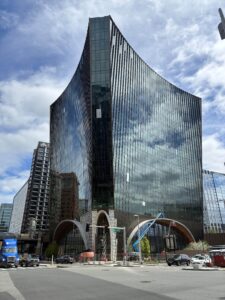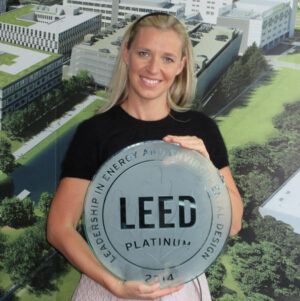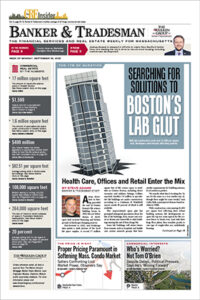Developers need to keep up to speed on an expanding array of environmental regulations and building certification programs, creating opportunities for VvS | Architects & Consultants. After attending Harvard University and starting her career at CBT Architects and Group One Partners, Agnes Vorbrodt started a green building council in her native Poland and founded her consulting company in 2008 to advise developers of projects on both sides of the Atlantic. The Hamilton-based firm was part of the project team for Boston Global Investors’ 10 World Trade and Beacon Capital Partners’ proposed 2 Harbor lab project in the Boston Seaport District. VvS also is advising local school districts on building projects and nonprofit housing developers on projects in Boston.
Q: What are the differences in how green building requirements are enforced in the U.S. and Europe?
A: The U.S. is much more advanced than Europe, which some people find surprising. When I compare other places to Boston, projects are much more sustainable here than they are in other places. The new zero-carbon zoning took effect July 1, where all larger projects will have to be net zero-carbon from day one, is very ambitious. But this is the way to go forward. Article 37 [of the Boston zoning code] expanded it to smaller buildings. Whereas before it applied to larger buildings such as 2 Harbor or 10 World Trade, now it goes as low as 20,000 square feet.
This changes the picture for many developers who didn’t plan on implementing sustainable requirements before. This is similar to Cambridge and Somerville where even small projects – 10 or 15 units – have to implement some sustainability strategies. So, this is advancing the market and for some projects, it will be challenging. It may add extra costs for consultants performing the studies.
Trying to reach carbon neutrality by 2050 is the next reasonable step. There are some steps that make it easier. Projects can offset carbon. The new Massachusetts opt-in code is pushing electrification forward and Passive House. With the new zoning in Boston, basically you have to model your building, design it to meet BERDO and then you either take the extra step and install renewable energy, or purchase carbon offsets.
Q: Lab projects are typically energy-intensive. How did you approach sustainability at 10 World Trade and 2 Harbor?
A: They were permitted under the previous requirements, but they were very aggressive with their sustainability. 10 World Trade is LEED, WELL and SITES certified. It installed View glass, and they went above and beyond with the triangle parcel, where they created a beautiful, sustainable park. At 2 Harbor, we provided a zero-carbon building assessment which required us to model 25 different options for the building. The project is not zero carbon. It’s just not feasible in a lab building. But it’s very energy efficient and it’s LEED platinum certified and is pursuing WELL platinum.

The 10 World Trade office-lab building includes View “smart glass” that tints in response to sunlight intensity, reducing heating and cooling. Photo by Steve Adams | Banker & Tradesman Staff
Q: What projects do you have on the drawing board?
A: Mainly right now in Boston, it’s mainly affordable housing. That’s what’s being built the most at the moment, and there are some stringent requirements for multifamily projects. Every multifamily project over 12,000 square feet has to be Passive House-certified, and projects receiving funding from the Mayor’s Office of Housing also have to be fully electric and use sustainable materials. We’re working on school projects through the Massachusetts School Building Authority, and a timber office building in Warsaw, which is dramatically reducing embodied carbon.
Q: What are the financial pain points for developers from the current regulations locally?
A: Certifications are always a little extra cost, and the fees for energy modeling and [calculating] embodied carbon, but compared to the development costs it’s a small fraction. So, I do not believe that pursuing those certifications or meeting Article 37 actually causes significant increases in costs of the building. Passive House can be a little bit challenging for some projects, and meeting the carbon neutrality goals can be challenging if you have to offset or invest in renewable energy by purchasing offsets or renewable energy certificates.
Q: What are the biggest changes you’re seeing in choices of building materials?
A: Probably the biggest is switching to timber construction from concrete and steel, which are known for very heavy embedded carbon. But there’s also new materials like cement or concrete made with reduced embodied carbon. Clients like to use more vegetation, and projects are interested in using green roofs, or green walls, and other elements of using natural materials indoors. Many clients like that in that it’s visible. Overall, there’s interest in occupants’ well-being, and that is visible with the WELL and Fitwell certification.
Vorbrodt’s Five Favorite Movies and TV Shows:
- Mamma Mia!
- The Queen’s Gambit
- Indiana Jones
- The Proposal
- Air Force One







